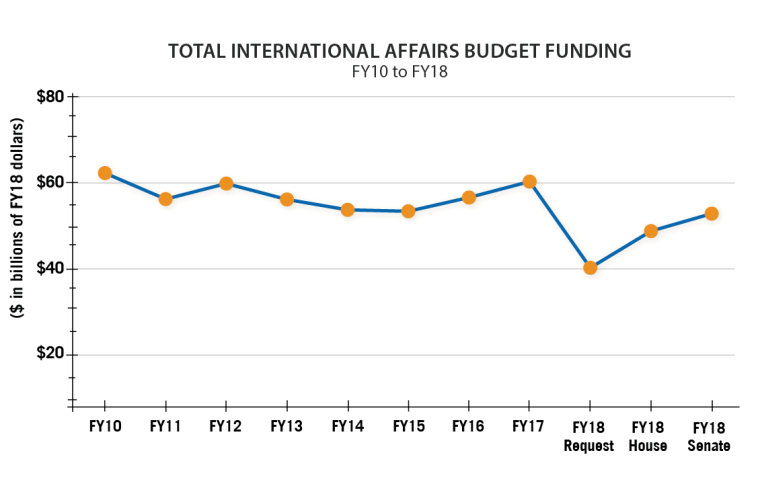
September 15, 2017
Following the release of its “skinny” budget proposal in March, the Administration released its detailed FY18 budget request in May, which included a draconian and disproportionate cut of 32% to the International Affairs Budget – one of the highest-level cuts proposed to a non-defense discretionary account.
When framing the topline details of the budget, Office of Management and Budget Director Mick Mulvaney singled out three areas for reductions in the entire $4 trillion federal budget, two of which were the “State Department and foreign assistance” – just 1% of the entire budget. If enacted, the Administration’s proposed cuts to these programs would have reduced funding levels for development and diplomacy programs to levels not seen since 9/11 (adjusted for inflation) and brought funding as a percentage of GDP to its lowest level since World War II (0.2%).

Thankfully, the House and Senate rejected the Administration’s deep and disproportionate cuts to the International Affairs Budget, but nonetheless proposed varying levels of cuts to these programs compared to current levels. It is clear that the lack of a budget deal for FY18 to lift the caps on non-defense discretionary spending is straining development and diplomacy programs already stretched by significant global challenges. It will be critical for Congress to pass a bipartisan budget deal similar to those struck in the past to alleviate the pressure on the caps and ensure that the U.S. retains its leadership role in the world.

Download the full report for a comparison of the FY18 budget request, the Senate funding proposal, and the House funding proposal.